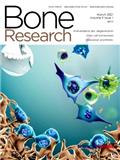
骨研究(英文版)(Bone Research)(原:颌骨研究(英文)) 知网万方维普
- CSCD
- 主管单位:
教育部
- 主办单位:
四川大学
- 国际刊号:
2095-4700;EISSN2095-6231
- 国内刊号:
51-1745/R
- 学科分类:
- 字数:
16000-52000
- 有无基金:
/有基金 100.0%
- 周期:
CN外文-季刊
- 特殊属性:
第一批认定学术期刊
- 电话:
028-85546461(202101期)
- 邮箱:
br@scu.edu.cn(202101期)
- 复合因子:
2.229
- 综合因子:
1.7
- 收录:
知网,万方,维普
- 级别:
CSCD
期刊简介
《骨研究》期刊已被查看: 次
更新频次
单位占比
一作占比
/有基金-100.0%投稿指南
1、投稿方式:在线投稿。
2、刊内网址:
http://www.nature.com/boneres/
投稿系统:
http://mts-boneres.nature.com/
3、刊内邮箱:br@scu.edu.cn
4、刊内电话:028-85546461
5、出刊日期:季刊,逢季末月出版。
2021年5月20日星期四
《骨研究(英文)》投稿指南
【官网信息】
Guide for Authors
Aims and Scope
Bone
Research is an Open Access, fully peer-reviewed journal publishing the
foremost progress and novel understanding of all aspects of bone
science. The journal highlights the breakthrough discoveries in basic
and clinical aspects of bone biology, pathophysiology and regeneration,
as well as other significant findings related to bone.
Covering
all aspects of bone science including its subspecialties, Bone Research
publishes original, highquality, peer-reviewed papers including
research articles, reviews, correspondence and comments.
Original research articles will be published under, but not limited to, the following headings:
Morphogenesis of bone and cartilage;
Musculoskeletal diseases;
Metabolic bone diseases;
Bone regeneration and bone tissue engineering;
Bone related biomaterials;
Clinical studies.
Journal Details
Editor-in-Chief:
Xuedong Zhou (China)
Founding Editor-in-Chief:
Xu Cao (USA)
Executive Editors-in-Chief:
Thomas L. Clemens (USA)
Yunfeng Lin (China)
Editorial office:
Bone Research Editorial Office
No. 14, 3rd section,
Renmin South Road, Chengdu 610041, Sichuan, P. R. China
Tel: +86 28 8554 6461
Fax: +86 28 8550 3479
E-mail: br@scu.edu.cn
ARTICLE TYPES
Article description
Abstract
Word limit
Tables/Figures
References guideline
Article
A
complete, comprehensive report of original research. An Article usually
has a fairly complex narrative that is based on multiple techniques
and/or approaches.
Unstructured abstract; max word limit: 250
4000-6,000 words excluding abstract, references, figures and tables
No more than 7 figures; no more than 4 tables
No limits
Correspondence
The
Editors will occasionally consider the publication of correspondence
developing the debate relating to a particular journal article that has
already been published in the journal. These would usually be published
alongside a reply from the authors of the original article.
None
800 words excluding, references, figures and tables
None
No limits
Comment
Comments are an analysis of recently published papers of particular interest. This is a commission-only section.
None
1,500 words excluding references
No Limits
No limits
Editorial
The
editors invite editorials to discuss a topical issue or a paper
published in the journal and set the problems addressed by the paper in
the wider context of the field. These are usually commissioned, but
unsolicited editorial submissions are considered for publication.
None
2,000 words excluding references
No Limits
No limits
Review Article
A
comprehensive synthesis and/or analysis of specific topics. A short
Introduction giving the rationale for the review should be followed by
sections with appropriate subheadings, followed by a conclusions section
at the end. The standard footer headings (Acknowledgements,
Contributions, Competing Interests, Funding) are required. All invited
reviews will undergo peer review prior to acceptance.
Unstructured abstract; max word limit: 250
No less than 8,000 words excluding abstract, references, figures and tables
No more than 7 figures; no more than 4 tables
No less than 100 references
Word limit
Word
limits are provided for guidance only. The Editors will consider
submissions that are below or above the recommended limit, subject to
feedback received during peer review.
PREPARATION OF ARTICLES
Article Requirements
Cover letter
Each manuscript must be accompanied by a cover letter including statements that:
Highlight of the current manuscript should be limited to no more than 2 short sentences;
All authors agree with the submission;
The work has not been published or submitted for publication elsewhere, either completely or in part, or in another form or language;
If material has been reproduced from another source,
the authors have authorization from the copyright holder (usually the
Publisher) to use it, and have included this authorization with their
submission;
Conflict of Interest Statement
Organization of manuscript
For
first submissions (i.e. not revised manuscripts), authors may choose to
incorporate the manuscript text and figures into a single file
(Microsoft Word or TeX/LaTeX) up to 30 MB in size — the figures may be
inserted within the text at the appropriate positions. Article should
include continuous line number. Supplementary Information should be
combined and supplied as a separate file, preferably in Word format.
Alternatively authors can follow the guidelines outlined below, which must be followed when submitting files for revisions.
All
textual content should be provided in a single file, prepared using
either Microsoft Word or TeX/LaTeX; figures should be provided in
individual files. The manuscript text file should include the following
parts, in order: a title page with author affiliations and contact
information (the corresponding author should be identified with an
asterisk); the sections required for each content type (see information
for different content types) then References, Acknowledgements
(optional), Author Contributions (Articles only), Competing Financial
Interests statement, Figure Legends and Tables. Footnotes to the text
are not allowed and any such material should be incorporated into the
text as parenthetical matter.
Please
note that Articles must contain the following components in the order
stated. Other Article Types needn’t following the order. Please see
below for further details.
Title page
Abstract
Introduction
Results
Discussion
Materials and methods
Acknowledgements
Conflict of interests
Author contributions
References
Figure legends
Tables
Figures
(i) Title page
The
title page should include a succinct title (less than 100 characters); a
concise running title (which should normally not exceed 50 characters);
the full names of all authors including their given names; the
affiliations (including city, state, country and zip code) of all
authors; the official email addresses of all authors, and the full
contact details of the corresponding author (including telephone and fax
numbers). The title should be clear, concise and descriptive; and
should not include subtitles, colons, periods, or nonstandard
abbreviations. The maximum corresponding Revised July 24th, 2020
www.nature.com/boneres 3 authors for Bone Research are 3, and the
maximum co-first authors for one submission are 3. Please also list the
contributions for each author in the title page.
(ii) Abstract
A
brief abstract (maximum 250 words) should state the purpose, basic
procedures, main findings and principal conclusions of the study. The
abstract should not contain abbreviations or references and should not
be structured.
(iii) Introduction
The
Introduction should summarize the rationale for the study and outline
pertinent background material. The Introduction should not contain
either results or conclusions.
(iv) Results
The
Results should be presented in a logical sequence in the text, tables
and figures; repetitive presentation of the same data in different forms
should be avoided. The Results should not include material appropriate
to the Discussion.
(v) Discussion
The
Discussion should not reiterate Results, but rather should consider
them in relation to any hypotheses advanced in the Introduction. This
may include an evaluation of methodology and the relationship of new
information to the existing body of knowledge in that field.
(vi) Materials and methods
Key
Materials and Methods should be described in sufficient detail to allow
the experimental work to be reproduced in another laboratory, and to
leave the reader in no doubt as to how the results were derived. For
some routing methods, please put it as the Supplemental Methods, but
ensure that all supplemental files are called out in the text.
……
更多详情:
https://www.nature.com/documents/boneres-gta.pdf
上一篇:眼视光学杂志(英文版)(Eye and Vision)下一篇:电化学能源评论(英文)(Electrochemical Energy Reviews)
《骨研究》同类临床医学期刊
-
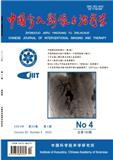
中国介入影像与治疗学
北核,科核
CN中文-月刊影响因子1.132
-

养生大世界
国级普刊
CN中文-半月刊影响因子0
-

护理学杂志
北核,科核,武A+,CSCD扩,高T1
CN中文-半月刊影响因子2.427
-
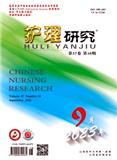
护理研究
北核,科核,武A+,高T1
CN中文-半月刊影响因子2.085
-
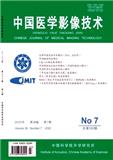
中国医学影像技术
北核,CSCD,科核,高T3,武B+
CN中文-月刊影响因子1.157
-
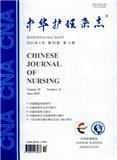
中华护理杂志
北核,CSCD,科核,武A+,高T1
CN中文-半月刊影响因子3.586
-
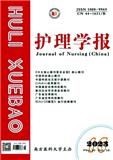
护理学报
科核,武A,高T2
CN中文-半月刊影响因子1.755
-
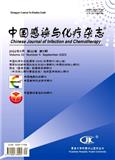
中国感染与化疗杂志
北核,CSCD,科核,武A+
CN中文-双月刊影响因子2.174
常见问题
-
骨研究杂志社官网、联系方式是什么?
骨研究杂志社官网:http://www.nature.com/boneres/
投稿网址:http://mts-boneres.nature.com/联系电话:028-85546461(202101期)
投稿邮箱:br@scu.edu.cn(202101期) -
骨研究杂志是核心期刊么?
骨研究是核心期刊,级别是:CSCD, 是:临床医学分类下的知网,万方,维普收录的期刊。
-
请问你们是骨研究杂志社吗?
我们不是《骨研究》杂志社。本站主要从事期刊信息展示与期刊推荐,不是任何杂志官网,直投稿件请联系杂志社。本站仅提供免费的学术指导、论文辅导、期刊投稿信息整理收集服务。
-
你们指导服务后可以保证文章被发表吗?
期刊发表的成功与否,主要取决于文章内容的质量。编辑老师会根据研究领域、创新性等多因素进行考量。我们会帮助您理解期刊的发表要求,助力提升发表几率,从而增加发表的机会。
-
晋级论文能否在报纸上发表?
在学术界,论文的发表往往被视为研究者职业发展的重要一环。晋级论文,即为了获得更高职称或学术地位而撰写的学术论文,通常需在专业期刊上发表。然而,许多人可能会问
